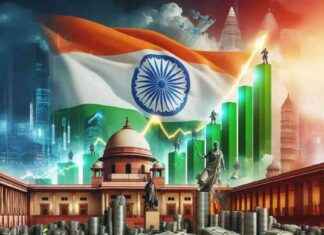The impact of streaming services on Direct-to-Home (DTH) and Multi-System Operators (MSO) companies in India is a hot topic in the media landscape. A recent report by the rating agency ICRA sheds light on the challenges and opportunities facing these pay TV distribution companies in the face of growing competition from Over-the-Top (OTT) players and Prasar Bharati’s DD Free Dish.
According to the report, the revenues of DTH and MSO companies are expected to contract by 1-3% in the fiscal year 2026 due to the increasing competition in the market. This decline will be partially offset by a projected 1-3% increase in average revenue per user (ARPU) during the same period. The report also anticipates that DTH and MSO players will be able to charge higher prices for bundled or premium offerings and industry consolidation.
The challenges facing these companies include rising content acquisition costs, ongoing capital expenditure, and operational expenses related to network expansion and maintenance. Despite these challenges, the strong parentage of major players will ensure adequate liquidity and access to capital for future investments.
OTT PREFERRED OVER TRADITIONAL TV VIEWING
Ritu Goswami, Sector Head of Corporate Ratings at ICRA, highlighted the various factors that make OTT platforms a preferred mode of TV viewing for consumers. These factors include on-demand and personalized content, ad-free viewing options, access to regional content, and flexible subscription models. Additionally, the increasing penetration of smartphones, affordable data plans, and regulatory changes have contributed to the shift towards non-traditional TV viewing in India over the past decade.
India’s television market, the second largest in the world after China, is estimated to have nearly 190 million TV households in 2024, with continued growth expected in the near future. The industry is witnessing a structural evolution, with higher ARPU subscribers migrating towards smart TVs and digital alternatives, while lower-income households are gravitating towards free dish services. Urban areas are experiencing a sharper shift towards streaming platforms, while rural and low-income households are showing interest in free dish services.
Goswami emphasized that while India has a large subscriber base, the industry lags behind developed markets like the US and Europe in terms of revenue due to lower ARPU. The pace of cord-cutting in India is expected to be moderate, with significant variations between urban and rural markets. The strong tradition of TV viewing, availability of affordable hybrid offerings, and challenges related to internet infrastructure will prevent a sharp decline in pay-TV subscriptions.
In conclusion, the landscape of the Indian TV distribution industry is rapidly evolving, with DTH and MSO companies facing both challenges and opportunities in the wake of increasing competition from OTT platforms and free dish services. With strategic pricing, content bundling, and industry consolidation, these companies can navigate the changing market dynamics and continue to thrive in the evolving media landscape.























